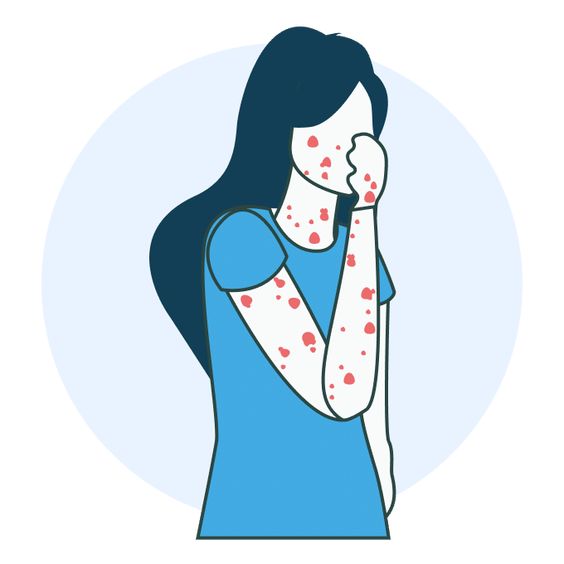Introduction
A skin rash is a noticeable change in the color, texture, or appearance of your skin. It can be localized to one area or affect your entire body. Rashes can vary greatly in appearance and severity, ranging from mild and temporary to severe and long-lasting.

Most skin rashes are harmless and resolve on their own. However, some rashes can be a sign of an underlying medical condition and may require medical attention. It's essential to understand the different types, symptoms, causes, and treatments for skin rashes to manage them effectively and seek appropriate care when necessary.
Types of Skin Rashes
There are numerous types of skin rashes, each with unique characteristics. Some common types include:
- Eczema (Atopic Dermatitis): A chronic condition characterized by dry, itchy, and inflamed skin. It often appears in infancy or childhood but can affect adults as well.
- Psoriasis: An autoimmune disorder that causes thick, scaly plaques to form on the skin. It's a chronic condition that tends to come and go in cycles.
- Contact Dermatitis: An inflammatory reaction triggered by contact with an irritant or allergen. Common culprits include poison ivy, nickel, and fragrances.
- Hives (Urticaria): Raised, itchy welts that appear suddenly and can vary in size and shape. They are often caused by allergic reactions.
- Shingles (Herpes Zoster): A painful rash caused by the varicella-zoster virus, the same virus that causes chickenpox. It typically appears as a stripe of blisters on one side of the body.
Symptoms of Skin Rashes
The symptoms of a skin rash can vary depending on the underlying cause. Common signs include:
- Redness
- Itching
- Dryness
- Swelling
- Bumps or blisters
- Pain or tenderness
- Scaling or flaking
Causes of Skin Rashes
Skin rashes can be caused by a wide range of factors, including:
- Allergies: Reactions to substances like pollen, pet dander, food, and medications.
- Infections: Bacterial, viral, or fungal infections.
- Autoimmune disorders: Conditions like psoriasis and lupus.
- Environmental factors: Exposure to irritants like soaps, detergents, and cosmetics.
- Medical conditions: Certain medical conditions, such as diabetes or thyroid disease.
Diagnosis and Treatments
To diagnose a skin rash, a doctor will typically examine your skin, review your medical history, and ask about your symptoms. They may also order tests, such as a skin biopsy or allergy testing, to confirm the diagnosis.
Treatment for a skin rash depends on the underlying cause. Options may include:
- Over-the-counter remedies: Anti-itch creams, moisturizers, and hydrocortisone cream.
- Prescription medications: Topical or oral corticosteroids, antihistamines, and antibiotics.
- Lifestyle changes: Avoiding known triggers, wearing loose-fitting clothing, and taking cool showers.
- Light therapy: Exposing the skin to ultraviolet light to reduce inflammation.

.jpg)